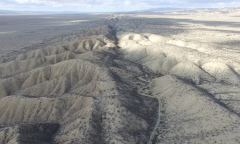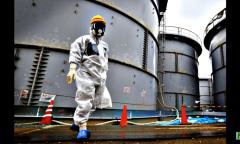By KM Diaz, | May 31, 2017

The end of Ordovician extinction is considered to be one of the largest mass extinctions in the history of the Earth. (YouTube)
Researchers demonstrate how geoengineering schemes trigger climate catastrophe during the Ordovician geological period 440 million years ago, causing all species to die and eventually leads to mass extinction.
The planet north of the tropics during that time covered with ocean, but 85 percent of marine animal species suddenly disappeared. The end of Ordovician extinction is considered to be one of the largest mass extinctions in the history of the Earth.
Like Us on Facebook
Figuring out the cause of any mass extinction is difficult, according to David Fike, the co-author of the study and associate professor of earth and planetary sciences in Arts & Sciences.
The research team led by an earth scientist at Amherst College, David Jones, measures the abundance of mercury, in which coal-burning power plants and other anthropogenic activities are the primary sources, while volcanism was the main source in the Ordovician period.
Fike said that volcanism corresponds with mass extinctions having an unusual frequency, not pointing about an isolated volcano, but perhaps, powerful eruptions with thick lava flow, forming large igneous provinces (LIPs). One of the most famous examples of LIP in the United States is the Columbia River Basalt Province.
Jones analyzed rock samples of Ordovician age from Monitor Range in Nevada and South China, and anomalously high mercury concentrations were discovered. Some of the samples contained 500 times more mercury compared to the background concentration. Before and during the mass extinction, the mercury occurs in three pulses.
The sequence of events has been unusual as extinction happens only in two pulses and coincided with glaciation. Scientists wonder whether the first wave of eruptions did not drive climate of the Earth in a vulnerable state, creating a climate catastrophe that triggers eruptions.
In the first wave of eruptions, LIPs lay down and then moved below atmospheric carbon dioxide. Glaciers formed are supercontinent of Gondwana as the climate cooled. The cooling likely decreased the tropopause - boundary of the atmosphere with various temperature gradients.
In the second wave of volcanic eruptions, immense amounts of sulfur dioxide were injected above the tropopause, increasing the amount of reflected sunlight in the Earth, leading to the first-ever largest pulse of extinctions. When ice sheets expanded, sea started to get colder and ocean level dropped, causing species to die.
Fike said that different factors affect the climate of the Earth could interact in most unanticipated ways. It is also possible that such events may not seem to be extreme, but the climate system could be in a dangerous state and further distress has catastrophic outcomes. Fike also noted that this is something to consider on geoengineering schemes to alleviate global warming.
-
Use of Coronavirus Pandemic Drones Raises Privacy Concerns: Drones Spread Fear, Local Officials Say

-
Coronavirus Hampers The Delivery Of Lockheed Martin F-35 Stealth Fighters For 2020

-
Instagram Speeds Up Plans to Add Account Memorialization Feature Due to COVID-19 Deaths

-
NASA: Perseverance Plans to Bring 'Mars Rock' to Earth in 2031

-
600 Dead And 3,000 In The Hospital as Iranians Believed Drinking High-Concentrations of Alcohol Can Cure The Coronavirus

-
600 Dead And 3,000 In The Hospital as Iranians Believed Drinking High-Concentrations of Alcohol Can Cure The Coronavirus

-
COVID-19: Doctors, Nurses Use Virtual Reality to Learn New Skills in Treating Coronavirus Patients









